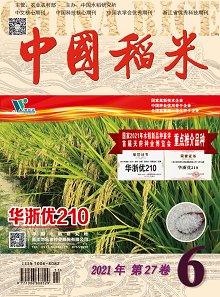The basic characteristics of the rice varieties that have passed the provincial or national certification in China in 2020 are analyzed. In 2020, there were 1,936 rice varieties approved at or above the provincial level in China (574 varieties passed the national approval), including 144 conventional indica rice, 582 two lines hybrid indica rice, 680 three lines hybrid indica rice, 424 conventional japonica rice, 45 hybrid japonica rice and 71 sterile lines. The number of nationally approved varieties increased by 54.30% and the number of non-nationally approved varieties increased by 43.07% compared with 2019. The regional test yields of conventional indica rice, two-line hybrid indica rice, three-line hybrid indica rice, conventional japonica rice, and hybrid japonica rice approved in 2020 were 519.59, 609.99, 589.82, 610.00 and 685.30 kg/667 m2,except for conventional japonica rice, the regional test yields of other types of varieties have increased to a certain extent compared to 2015—2019. In 2020, the high-quality compliance rate of nationally approved varieties was 78.57% and the high-quality compliance rate of non-nationally approved rice varieties was 60.61%, both of which are higher than that in 2019, and their performance has been quite good. The comprehensive resistance performance of the varieties approved in 2020 is still not good enough. Among the nationally approved varieties, only 13.59% of the varieties were moderately resistant to rice blast, and only 5.11% of the varieties were moderately resistant to bacterial blight, the proportions of the non-nationally approved varieties were 34.08% and 20.09%, respectively. However, some varieties show high resistance to rice blast and bacterial blight.

